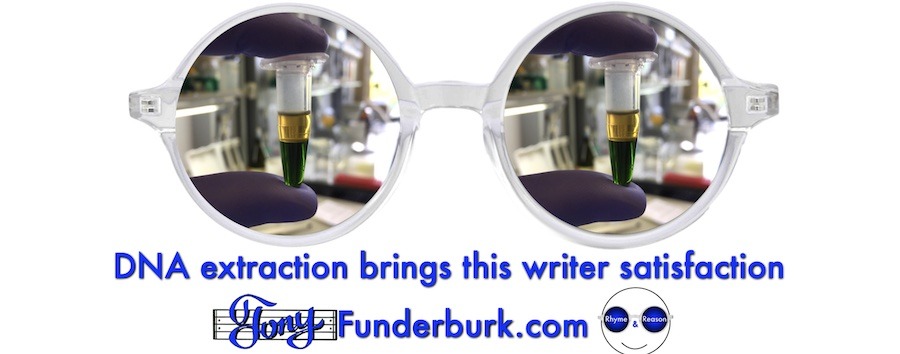DNA extraction. Sounds like something straight outta Jurassic Park, right? But it’s not science fiction anymore. And it’s another one of the millions of examples of how we’re not just carbon based lifeforms.
DNA extraction has been done in impossible places.
But before I share a few of those, I’d like to share some steps to the extraction process. Because it’s important to know this isn’t a simple process with just a hypodermic needle and a microscope. Despite what you might have seen in the movies.
First, cells have to be “broken” in order to release DNA. Then the DNA has to be separated from proteins and other “cellular debris.” And I read how, after that, the DNA is “precipitated” with some type of alcohol. According to the dictionary, “precipitated” just means “cause (a substance) to be deposited in solid form from a solution.”
Of course, when you pour alcohol on a substance (in this case, DNA) you gotta clean it up. And once that’s done, then it’s a matter of confirming the presence and quality of DNA.
But there’s a catch.
You can’t extract DNA from anything older than 10,000 years. And that’s because so-called “scientists” measured the DNA disintegration rates in well-preserved specimens (like Egyptian mummies) and came up with this limit.
But…wait a second…is that true?
Because DNA has been extracted from a 400,000-year-old hominin femur from Spain.
Not impressed?
OK, what if I told you DNA has also been found in magnolia leaves, salt crystals, and fish scales that are all claimed to be millions of years old? And what would you say if I told you DNA has been found in dinosaur bones? Lots of them.
They’ve even found DNA inside plants and insects that are inside amber (a hard, translucent, fossilized resin produced by extinct coniferous trees of the Tertiary period, typically yellowish in color). And the amber is supposed to be somewhere between 25 and 120 million years old.
So, what’s an evolutionist to do about that 10,000 years limit?
Well, come up with another silly claim to add to their almost never-ending list of mostly debunked claims, of course. So, they now say that DNA can be preserved longer under the right “conditions.” Like if the surroundings were colder and dryer. And if there was less oxygen and bacteria and radiation.
But according to a distinguished Ph.D. from M.I.T. (and former evolutionist) “measured disintegration rates of DNA, under these more ideal conditions, do not support this claim.”
You don’t have to believe this is true.
You can believe in the accidental you.
But I hope you really think it through
And do what your Creator wants you to do.
Stay tuned,
Get my Rhyme & Reason Podcast delivered (free) right to your device.
My books are also on Amazon.com or Apple Books
Grab yourself an un-cool T-shirt
Or how about some music for kids


